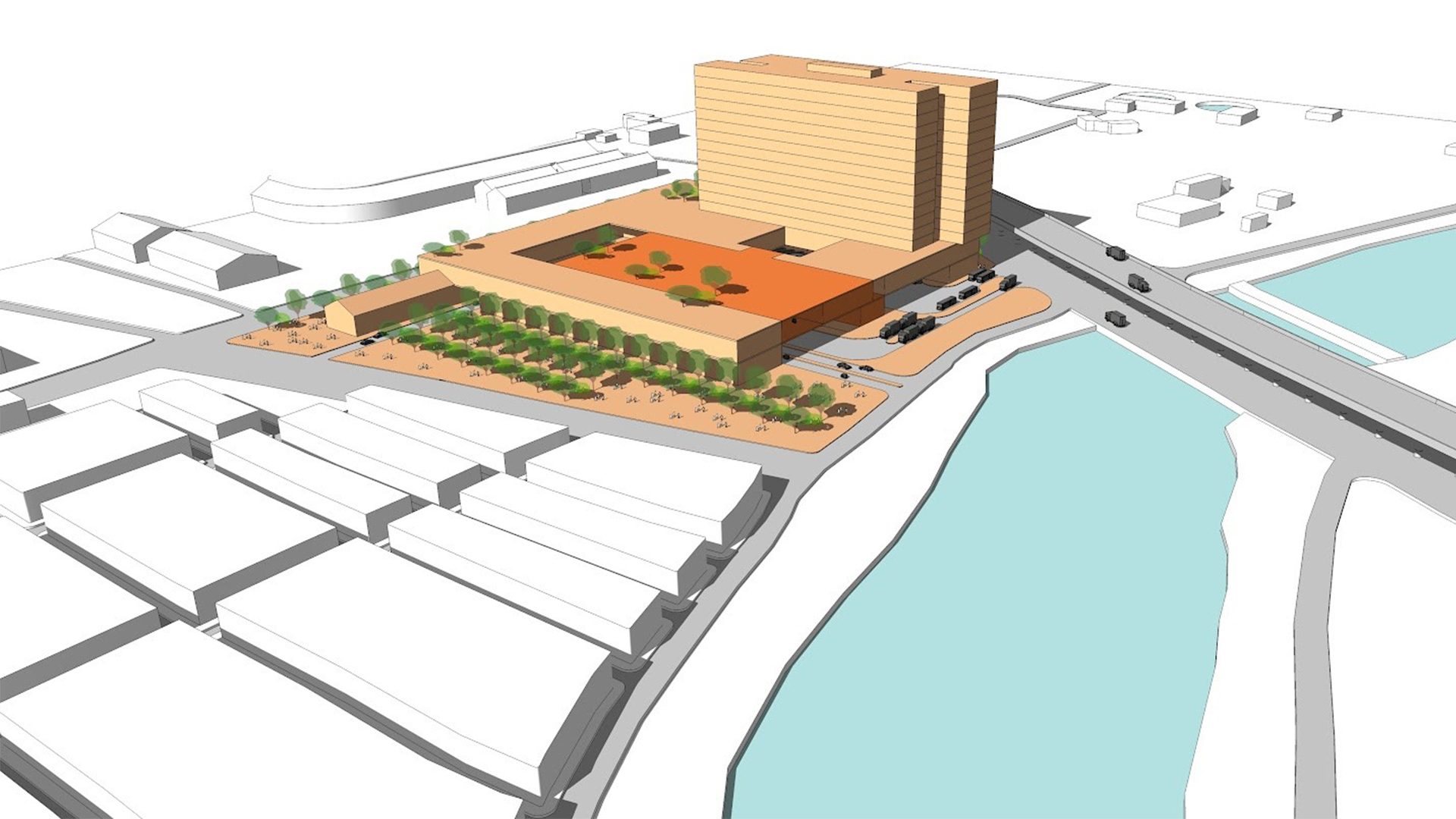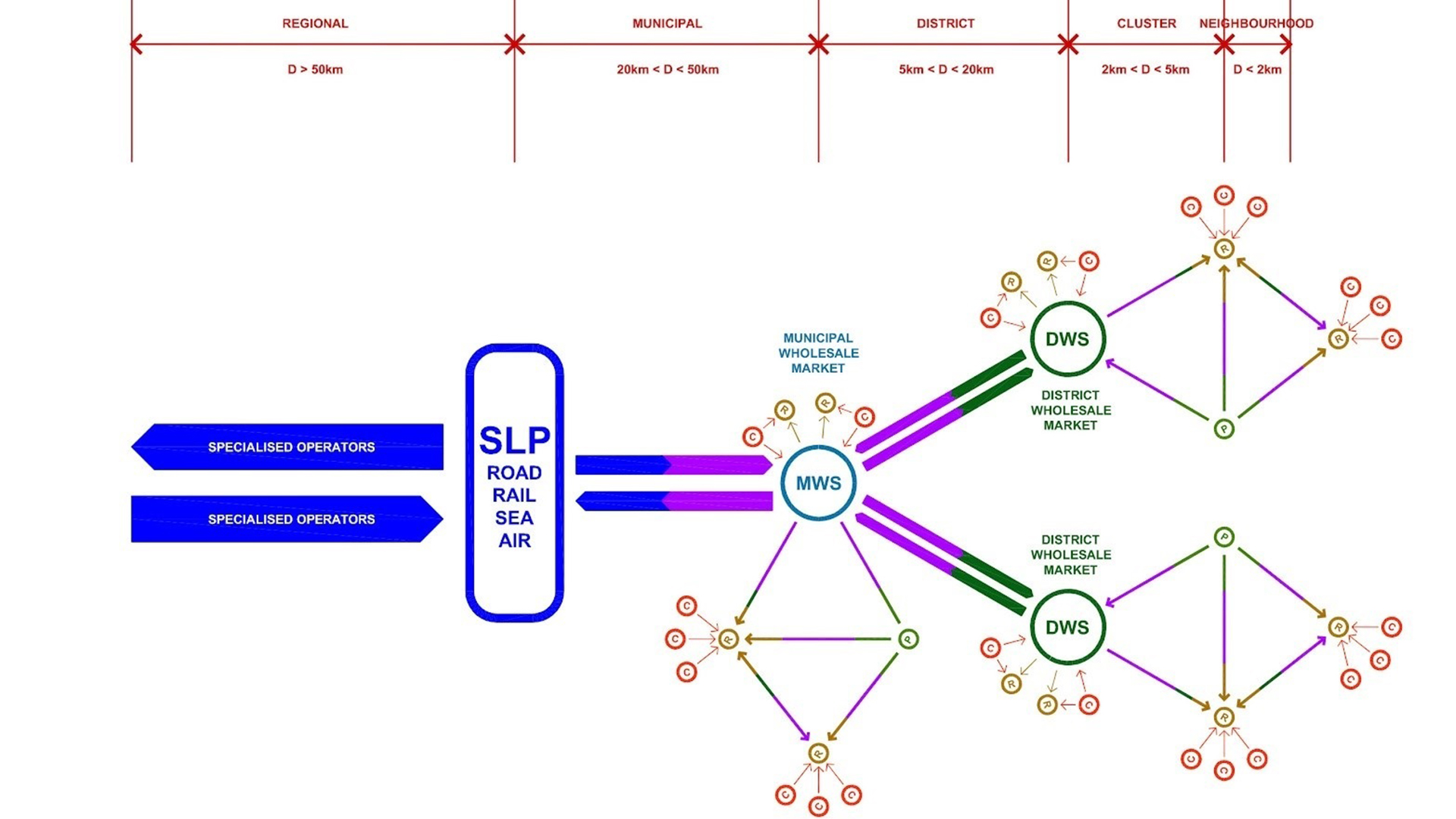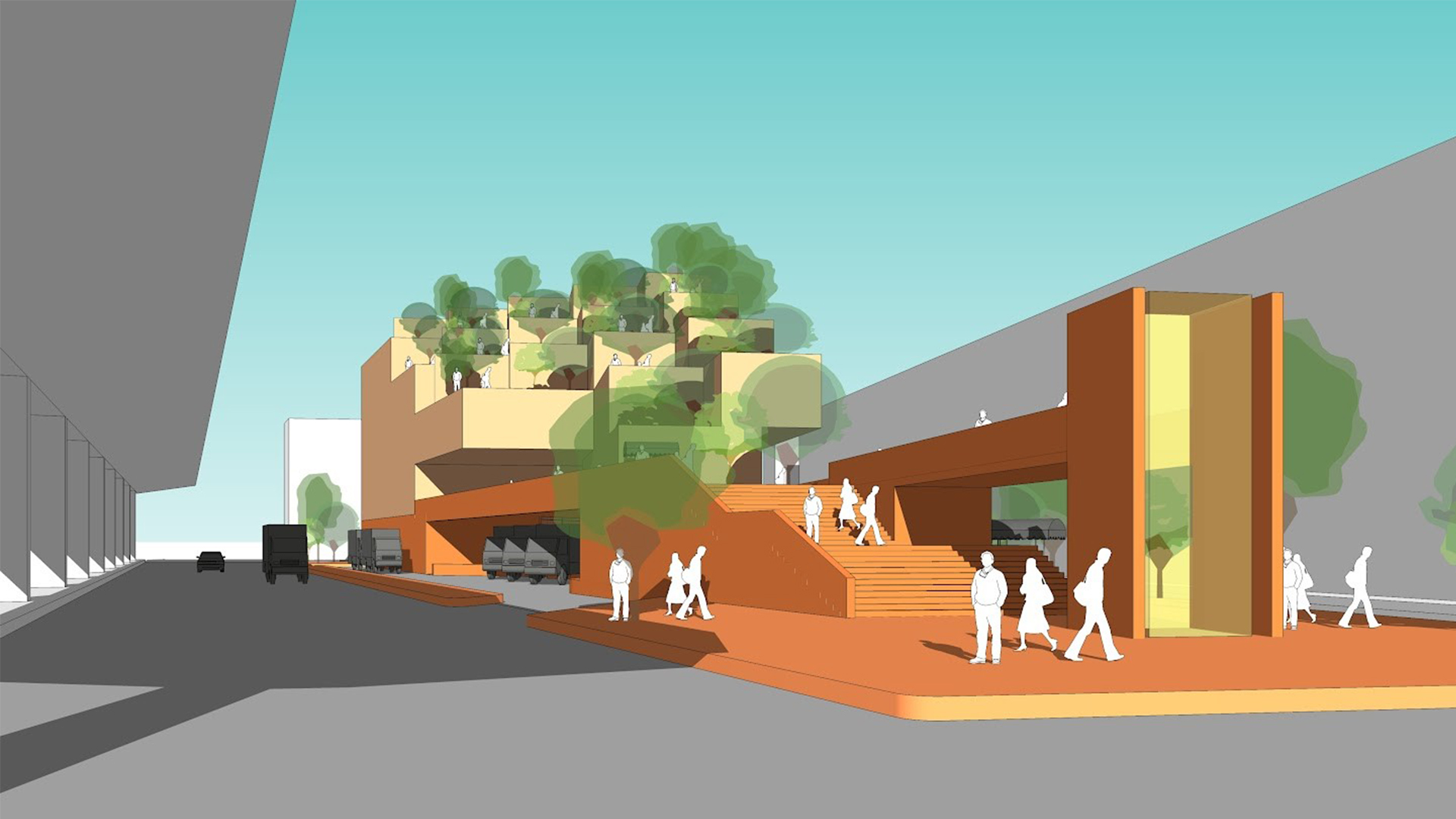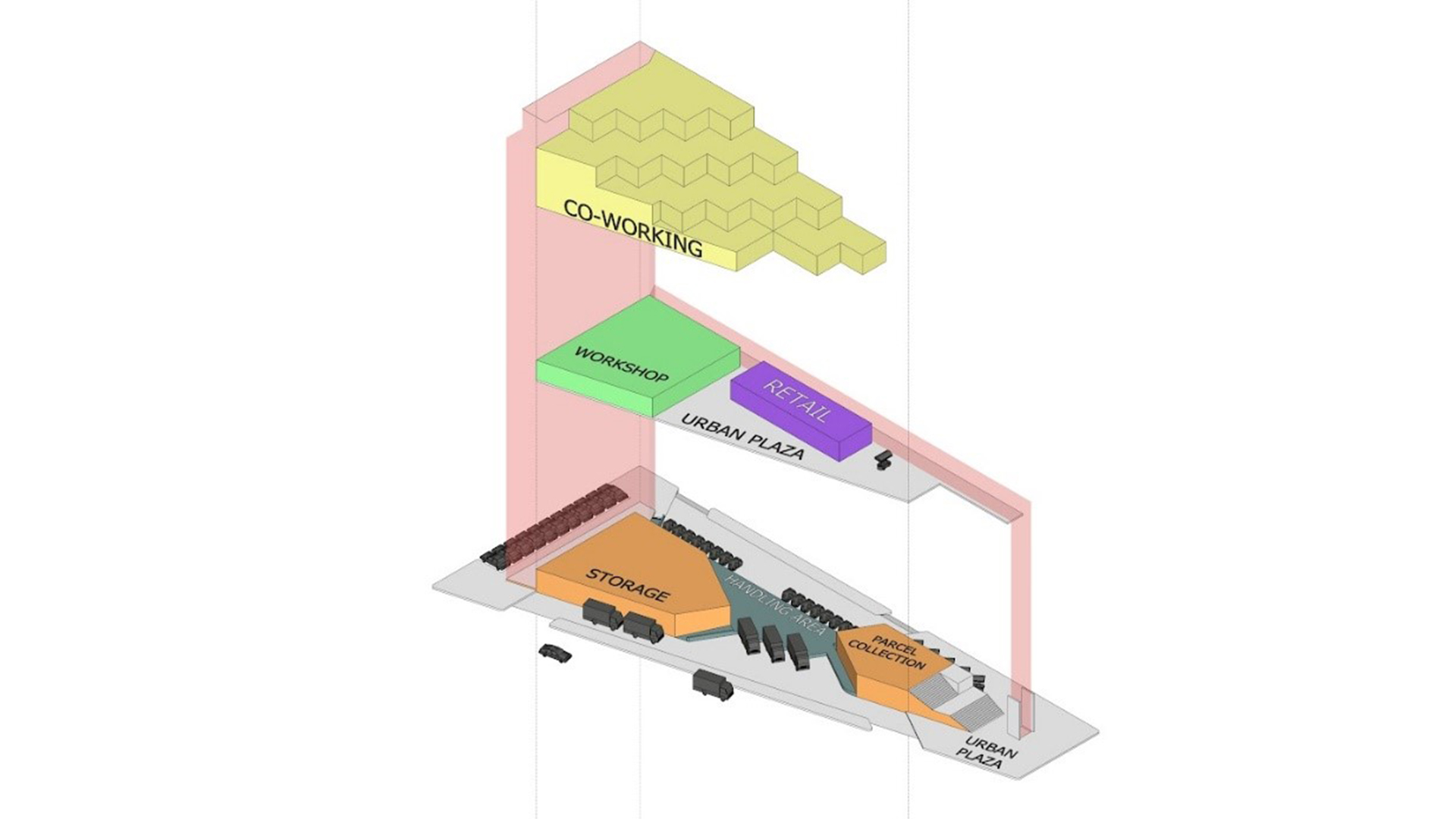Technical Specifications
Type
urban project
Location
Inde
project manager
Team enia : Claire Bach, Sohomdeep Roy, Ba Tuoc Vo, Elise Leclerc
Program
Status
study
Date
2020
This research aims to propose a model of logistics infrastructure that is responsive to the functioning of the Indian logistics system, particularly in the capital city, New Delhi.
Why this research?
Since the onset of economic growth in the 1990s, India's population has grown steadily, its cities have expanded and pollution has skyrocketed. Today, New Delhi is considered the most polluted city in the world. It is facing rapid urbanisation and has to deal with major supply issues. The need for logistics to supply its 20 million inhabitants is a major challenge both in terms of organisation and pollution. Indeed, freight represents only 14% of road transport but accounts for 50% of total emissions. However, this issue is not widely addressed in India today. This research aims to understand the functioning of the Indian supply chain by focusing on the last mile and the importance of the informal sector.
Methodology and results
To do this, in the context of a health crisis, we developed a questionnaire for Indian traders and conducted interviews with numerous logistics actors in France, India and Europe. This description of the current system led us to two models of logistics buildings: the Multi-Industry Hotel and the Relay House, which are integrated at different levels of the logistics chain. The latter is an infrastructure concept on a neighbourhood scale. The building explores the dynamics of proximity logistics in India to provide a flexible model for independent last mile logistics players. On a different scale, the Multi-Industry Hotel concept is to provide infrastructure at the scale of a sub-district - a cluster of several neighbourhoods. It works with the dynamics of high volume logistics and explores the synergy and animation that could be harnessed from such a convergence. Two experimental sites have been chosen in New Delhi, in the vicinity of the Tilak Nagar district, to propose a concrete architectural model.





